Any person who buys an apartment or makes repairs in it faces the question of purchasing flooring. There are many options for laying the floor, one of the most popular is laminate. This material is considered durable and inexpensive. In order to properly lay it, you should follow all the stages, including the preparatory ones. It is at this stage of the work that the question arises, which substrate for the laminate is better.
Bed linen
The use of the substrate is based on the characteristics of the material of the floor covering. It is made from waste wood processing enterprises. That is, sawdust is pressed under the influence of high pressure and temperature.
On the finished sheets, they apply decorative layerthat repeats the texture of wood. Then, cover the entire surface with varnish to increase the service life. On the underside of the laminate boards there is a layer of polymers that protects the material from moisture and mechanical damage.

Locks for fastening are installed on all sides of the resulting panel, so it is not difficult to lay the laminate. Lay the boards on the screed.
Note! If the unevenness difference on the floor should not be more than 1 mm per 2 running meters.
In this case, you must not lay the boards directly on the concrete, otherwise, when walking, they will knock on the screed and quickly wear out . It is for these purposes that the lining was developed, which acts as a shock absorber, and also increases the level of sound insulation in the room. And it also provides the necessary level of vapor barrier so that the coating does not deform during operation.
Which substrate for the laminate is better based on its characteristics
There are different options for laying between the floor and the covering:
- from cork;
- polymers;
- foil;
- needles;
- combined options.
To choose a substrate for a laminate on a concrete floor, it is necessary to take into account the characteristics of each of the listed types.
Cork covering
The main advantage is environmental friendliness. Even in the children's room, you can safely use a cork lining, it does not emit any harmful substances. And also this material has a long service life, good shock absorption and sound insulation.

Besides the positive aspects, there are also negative ones. These include:
- high price;
- afraid of moisture, therefore it is not used for warm floors.
It is made from crumbs of oak bark. Sometimes they use not only natural material, but also add rubber or bitumen, which reduces the cost.
Thus, it is advisable to use such a coating for dry rooms, without installing underfloor heating. Most often, cork is combined with an inexpensive laminate to optimize the overall cost of the flooring.
Foam backing
Laminate substrates (sheet) are made of polyethylene foam in several versions. They all have positive aspects, which include:
- High ability to keep moisture out;
- Keeps warm well;
- Not affected by bacteria and various chemicals;
- Light weight and low cost.
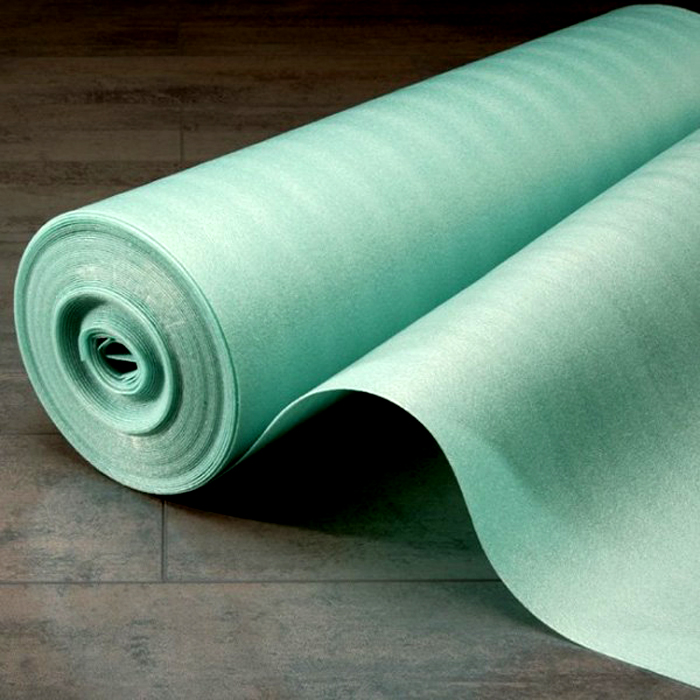
However, there is a drawback that outweighs all of this - a short service life and a quick loss of shape. That is, such a substrate will be acceptable in a room with high humidity and on a floor made of boards, which itself requires periodic repairs.
Expanded polystyrene
The material is recognized as the golden mean in terms of price and quality. This option consists of two layers: expanded polystyrene and foil. There are also extruded (single-layer).
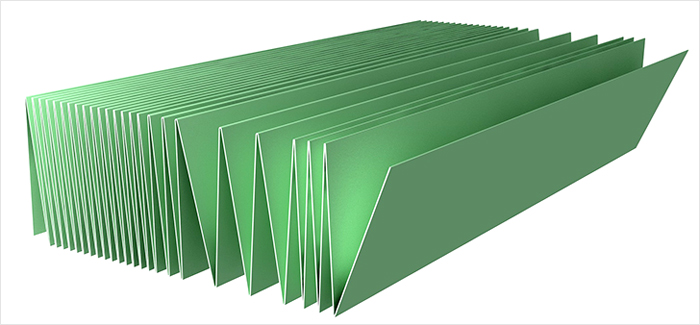
The substrate is easy to install, does not transmit sound and heat, hides various floor defects, and at a price it is an affordable option for many consumers. There is only one drawback - during long-term operation it can lose its shape.
If you choose a substrate for a laminate on a warm floor, which is better suited for such a coating, then expanded polystyrene is suitable material for such constructions.
From wood
This option is made from natural materials, is able to "breathe", but the price is much higher. Despite the cost, sheets from woodworking industry waste are in great demand, due to their durability and thermal insulation qualities, by which they are compared with soft insulation.

For example, a coniferous substrate for a laminate has the following customer reviews: “I don't write reviews often, but this backing amazed me. It has been with me for more than three years, during which time it has not caused any allergies or any other troubles. I thought that the coating would start to "walk", but nothing like that happened. Very satisfied".
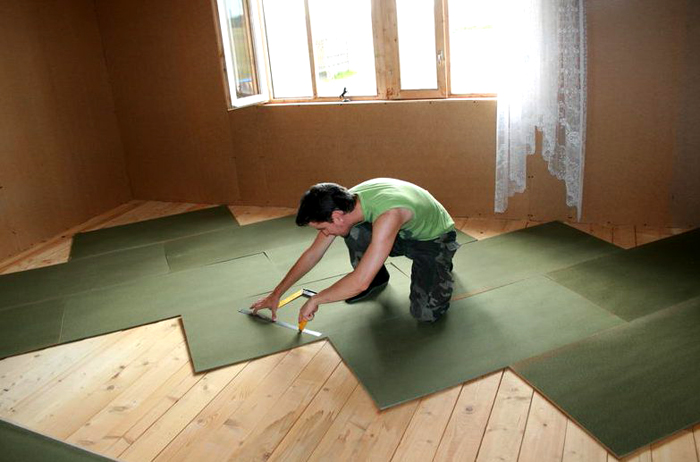
Another review: “One friend made a bed for himself, was unpleasantly surprised by the scent from it. I could not stand it, I handed it over to the store, as it turned out, the needles perfectly absorb all the smells. We replaced it with a new package, everything was already in order with it. "
Thus, it is rather difficult to accurately answer the question of which substrate for a laminate is better. For each buyer, the right option will be a good choice based on the purpose of use, humidity in the room and the planned cost of money.
Which substrate for laminate (price per m2) will be more profitable
When deciding which option from the whole variety is more suitable, we suggest looking at the table with indicative prices.
| Picture | Company (article) | Variety | Price (rub / sq.m) |
|---|---|---|---|
| Tepofol | Foamed (2 mm) | 15 | |
 | Tepofol | Foamed (4 mm) | 30 |
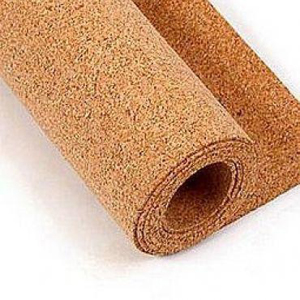 | Wicanders | Cork (2mm) | 120 |
 | Tuplex (RT-011) | Combined (extruded polystyrene foam and two layers of polyethylene film) | 130 |
 | Steico | Natural needles (7 mm) | 575 |
 | Coeksribas (CR-105-10) | Plug (10 mm) | 514 |
![]()
And also when choosing, you can look at the rating of manufacturers, according to buyers:
- The best natural substrates. In the first place is Premium Cork (Portugal), this material has a high density and low. Made from pressed bark of balsa tree. Price: 90 rub. per sq. meter (2mm). Next comes PARCOLAG (bitumen-cork version). Refers to ventilated material. Price: 95 rubles with a thickness of 3 mm.

Laminate flooring has long been part of our daily life. From a wide range of products, laminate is recognized as one of the most optimal solutions... Choosing it, the consumer pursues such goals as stability under load, excellent appearance, durability, price-quality ratio.
In addition, it is quite easy to install, so such work can be done not only by a professional, but also by an amateur. However, not everyone knows that the reliability and appearance of the laminate are 80 percent dependent on the substrate.
Surface preparation
Before choosing a substrate, you must surface preparation of concrete floor.
The very first and foremost is. If you lay the material on an uneven floor, then it loses its functionality:
- laminate panels will begin to sag under increased load;
- the seams between the panels may come apart;
- the boards will start to creak;
- the coating may swell.
Another important feature that can harm the laminate is high humidity, which can penetrate from under the screed. That is why cracks in the cement floor must be carefully repaired.
There are two optimal options for leveling a concrete floor: cement-sand screed and self-leveling mixture.
So, when we have the perfect laminate flooring ready, we can safely proceed with the selection of the substrate.
Advice! If you have made a screed, then you need to wait as long as possible for all the moisture to evaporate. You can check this as follows, put a glass jar with the neck down, if there is no perspiration after 10 hours, you can start working.
Why do you need a substrate
Its main functions are sound insulation, water absorption. In addition to all this, it serves as a good shock absorber: when you step on the laminate, it bends, sags, while the substrate softens the deformation. In addition, it hides small unevenness in the concrete floor and acts as a heat insulator.
It is important to consider the thickness of the material! It may seem that the more the better. But you need to take into account the fact that, with a thick layer, locks (joints of laminate panels) may begin to break. The thickness of natural substrates is 2 to 5 mm.
Types of laminate substrates
To choose required material, let's talk about its functional characteristics.
Cork or cork
Cork or cork backing is an environmentally friendly material. It is recommended for use in children's rooms and bedrooms.

The main raw material in the production of this material is the bark of cork oak, under pressure it is pressed and a natural glue is released - suberin, which reliably connects the pieces of cork, the material becomes homogeneous. On sale you can find cork backing in the form of rolls and sheets.
Advantages:
- does not sag or deform over time;
- increases the sound and heat insulating properties of the material;
- fire resistance;
- the ability to maintain shape in all directions;
- has antifungal properties.
Disadvantages:
- afraid of moisture;
- quite high price;
- not suitable for installing a warm floor;
- she needs a perfectly flat floor.
There are varieties of cork substrates: bitumen-cork and rubber-cork.
Bituminous cork
For its manufacture, cardboard or strong paper is used, a bituminous layer and cork chips pressed into it are applied to its surface. Should be laid such a substrate with the cork layer down, thus, it will protect the laminate from moisture and remove accumulated moisture.

Advantages:
- provides waterproofing;
- resistance to moisture.
Disadvantages: high price, since this material contains bitumen, its price increases.
Rubber-cork
Manufactured using synthetic rubber. Its main positive characteristics are noise absorption, moisture resistance, environmental friendliness of the material. For everyone who has thought of making "warm floors" in the house, a rubber-cork backing is ideal.

Advice! If you decide in a kitchen or other rooms with high humidity, then you should pay special attention to waterproofing properties material, in this case it is advisable to choose a bitumen-cork. In all cork coverings under the laminate, air movement occurs, which prevents condensation from appearing on the surface.
Izolonovaya
In other words, polyethylene foam. It is one of the most demanded. It is produced in the form of rolls and sheets. The thickness of the sheets ranges from 2-5 mm.

Advantages:
- the material is absolutely waterproof;
- low cost;
- environmental Safety;
- destructively affects mold, fungus;
- ease and simplicity in work.
Disadvantages:
- low level of noise insulation;
- deformation with active use;
- loses volume under load;
- low amortization properties.
Foil
This material consists of polystyrene and aluminum foil, which gives it a heat-insulating effect, reducing heat loss in the room.
Advice! It is necessary to lay such a substrate with the foil upwards so that it retains its useful properties.

Advantages:
- not afraid of mold and moisture;
- acceptable price;
- thermal insulation, sound insulation;
- does not absorb moisture.
Disadvantages:
- at high loads, it bursts and turns into ordinary polyethylene, is quickly pressed;
- short-lived.
Advice! This type of underlay can be used under the underfloor heating system.
Extruded expanded polystyrene
High-quality material of a new generation, which is being actively used in thermal insulation of floors. Its composition is filled with air molecules.

Advantages:
- high thermal insulation performance;
- lack of moisture under the laminate;
- provides air movement.
Disadvantages:
- leveling ability is weak;
- a large amount of unused material remains when used.
How to install a cork backing
- Before starting work, it is necessary to unpack the roll and leave it at room temperature for a day so that the material adapts to room conditions and humidity.
- It is necessary to thoroughly clean the base, putty all cracks. This material, when laid on a concrete floor, needs to be treated with an antifungal mixture, this will help to avoid the occurrence of mold in the future.
- You should pay attention to waterproofing, most often they use a polyethylene film, which is cut into strips of the required length with a margin of 3-4 cm.
- It is important to knowthat the underlay is laid across the laminate panels! We prepare it of the required size and length. It is necessary to lay it with a distance of 1 cm from the wall, and the next sheet is placed end to end, without overlaps and gaps. We connect them with construction tape.
- The last final step is the treatment of the substrate with a water-repellent compound, which will give additional protection against dampness and moisture.
Let's summarize:
This material is an expensive pleasure, but if you decide to make a quality floor that will serve you long years, stop your choice on it.
Advice! The substrate must not be laid in two layers!
Laying the polystyrene foam backing
In order to lay the substrate, we must prepare the subfloor. To do this, as mentioned above, you need:
- leveling the cement-sand screed;
- clean the surface from dirt and other irregularities, if there are cracks or other defects, you need to putty them, it must be clean, even and dry;
- in order to lay extruded polystyrene foam, you do not need additional fastening materials, glue, adhesive tape, you need to lay it across, at an angle of 45 degrees;
- the last stage, we place it as close as possible to each other in a checkerboard pattern.
Laying an isolon substrate
Placed on a prepared concrete floor. Cut the strips to the required length and overlap each other. Everything should be fastened with ordinary tape. It is necessary to maintain the gap between the wall and the laminate when laying.
Blitz tip:
The laminate should only be laid on a flat surface so that the differences do not exceed 2 mm.
Laminate flooring technology involves the use of special cushioning coatings that act as a damper and reduce the load on the joints. What is the best laminate underlay and why is it preferable to use it?
Why do you need a substrate - task and significance
Damper and leveling of small irregularities are the main tasks of any underlay
The main task is to level the floor level deviations relative to the horizon line and smooth out small irregularities. Thermal insulation, creation of a sound barrier and protection from moisture are secondary functions that substrates of different materials solve with different efficiency.
For laying the absolute majority of types of laminate, the optimal room temperature should not be less than 15-18 ° C, the air humidity should not be more than 70%, and the differences over the base should not be more than 2 mm per 1 m2.
The first two requirements are completely clear - it must be warm and dry. The level deviation per square meter indicates that the maximum depth of small potholes, rubble and other flaws should not exceed 2 mm in depth per 1 m2 of area.
Moreover, the number of potholes and sinks, when it comes to concrete surface, should be minimal and occur on 20-30% of the total floor area. There should be no cracks or splits at all. That is, the floor surface should be relatively flat with small debris.
At a wooden floor, a slight warping of the board is allowed within the same limits and values, while the panels are completely intact and securely fixed to the logs. Actually these problems and helps to solve the substrate under the laminate.
Coating - these are the first problems from the lack of an interlayer between the laminate and the subfloor. Subsequently, irregularities and the absence of a damper can cause chipping of the tool joints and damage to the lamellas.
Types of coatings - which one to choose

The main types of materials used in the installation of laminate and parquet boards
Laying the laminate can be done using a substrate of various materials. Generally, coatings are made of synthetic, natural and combined components.
The most commonly used types of substrates are:
- made of foamed polyethylene;
- from expanded polystyrene;
- technical plug;
- composite coatings.
Let's consider each of the types in more detail. As a conclusion, let's compare the cost of materials and try to find out which substrate is better and why.
Polyethylene foam cover
Polyethylene foam backing is the most popular choice for creating a damping layer when installing laminate, parquet and parquet boards. The material has a low cost and satisfactory performance to reduce the effect of drops on an uneven base.
The thickness of the polyethylene foam varies from 2 mm to 10 mm. The standard form factor is a roll with a width of 1.1-1.25 m. The length of a roll for household needs does not exceed 25-50 m2, although you can buy a roll with a covered area of \u200b\u200bup to 250 m2.
Competitive advantages include good moisture resistance of the coating, ease of use and durability. Polyethylene foam is not food for rodents and insects, does not rot, does not contribute to the formation of fungi and the spread of harmful microorganisms.
For joint use with a warm floor, there is a kind of polyethylene underlay for a laminate with a metallized coating, which contributes to the reflection and redistribution of thermal energy.
The main disadvantage is low strength and elasticity. During long-term operation, polyethylene cakes and loses its shape. In places where heavy furniture was located, failures and subsidence are felt. To reduce the penetrating noise, polyethylene foam is also not suitable - the porous structure of the material, even with a thickness of 3-4 mm, poorly dampens extraneous noise.
Polystyrene cover
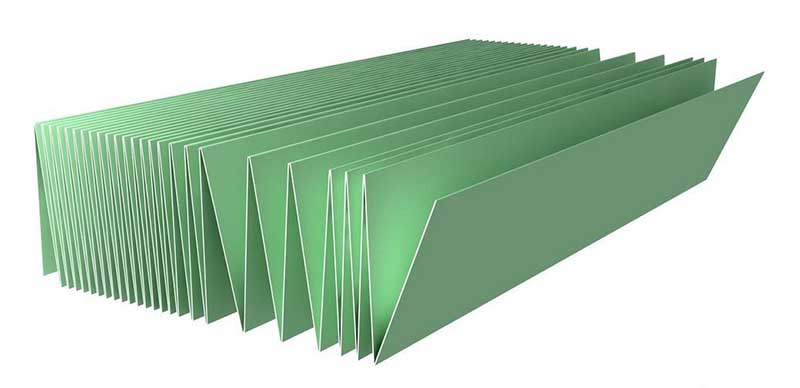
Polystyrene has good thermal insulation, but begins to lose its qualities after 5-7 years
The polystyrene foam backing has higher consumer qualities than the nearest competitor in the form of expanded polyethylene. It is produced in the form of free slabs, which are laid in any convenient way or as an "accordion", which is laid out on the floor surface along or across the room.
With the second, he copes a little worse, but much better than cheap counterparts. Among the advantages of a polystyrene foam backing are:
- Thermal insulation - like expanded polystyrene plates used for insulating floors and walls, the substrate has a rather low coefficient of thermal conductivity, which ensures a slow outflow of heat through the supporting base.
- Moisture resistance - the material is not affected by moisture and fumes from the concrete screed. Mold and mildew will not form on the bottom surface of the canvas.
- Service life - the service life of expanded polystyrene according to the manufacturer's statements is at least 30 years. In conditions of private construction and domestic use, you can count on operation for 15-20 years.
The main disadvantage of expanded polystyrene is the loss of technical indicators during operation and a low leveling ability. That is, after 5-7 years, the material noticeably loses its sound insulation, begins to sag under the weight of furniture and cakes. When burning, polystyrene releases harmful substances that are dangerous to human health.
In addition to conventional polystyrene, there is a composite variety. This is a material consisting of two layers of laminated film, between which polystyrene is located in the form of granules.
This type of coating has a higher leveling ability and retains its shape well, even under point and local loads for a long time.
Cork backing
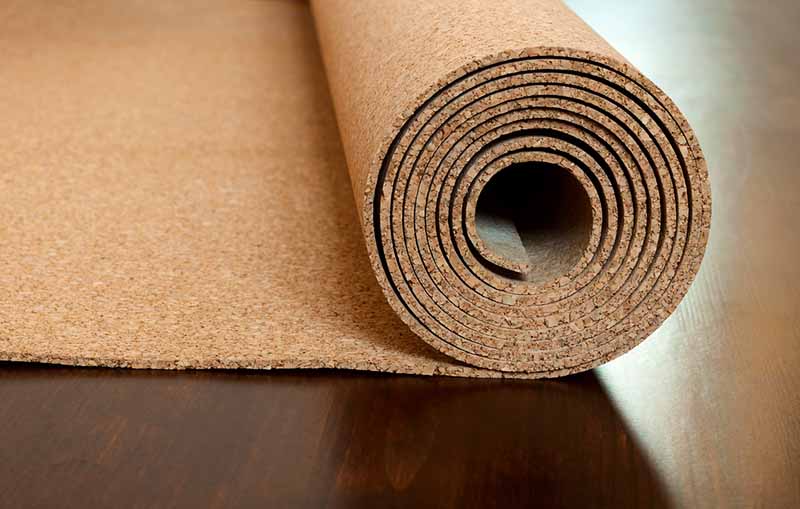
The cork has excellent elasticity and durability
Technical cork is a roll material made from an agglomerate of cork oak bark. Only natural ingredients and binders are involved in the production of the material.
Today it is the highest quality and preferred coating for use with laminate and parquet boards. Natural cork has a service life of more than 25-30 years, is resistant to deformation and prolonged loads.
The porous structure of the cork ensures that with a thickness of 2 mm, the material is able to reduce sound penetrating from the outside and completely remove impact noise with a power of 12-15 dB.
The disadvantages of technical cork are that the coating is quite expensive, absolutely ineffective when used in conjunction with floor heating systems and is afraid of prolonged exposure to moisture.
For use in wet rooms, there is a separate type with the addition of rubber. This coating does not form condensation and can be installed even without creating an additional insulating layer.
Available in both roll and sheet form. The standard roll width is 1-1.4 m. The substrate thickness varies from 2 to 10 mm. The size of the technical plug in the sheets is regulated and is equal to 910/915 mm in length and 610 mm in width.
Pine and wood covering

Coniferous slabs are rarely used due to their great thickness and cost.
Coniferous backing is a soft fibreboard made from wood residues conifers trees, needles and solid wood from sanitary and preventive deforestation.
The material, like the cork, is 100% environmentally friendly and is recommended for use in homes with small children, with people suffering from exacerbations of chronic or seasonal allergies and in other cases when the use of synthetic materials is impossible.
Available in various sizes of slabs. The thickness of the slabs varies from 3.6 mm to 7 mm. The coniferous board is distinguished by such qualities as:
- Sound insulation - the structure of the coniferous board helps to reduce the noise level in the room and the sound of footsteps when walking on the floor covering, dampens penetrating and impact noise.
- Thermal barrier - the substrate has a low coefficient of thermal conductivity, which makes it a good choice when you need to not only create a damper under the laminated floor, but also insulate the sub floor.
- Leveling qualities - due to its density, the material effectively levels height differences up to 2 mm. With large deviations, the use of the coating is not rational.
- Service life - coniferous boards do not lose their performance for 10-15 years. Over time, the coating will not sag, will not lose strength and volume.
The disadvantages of the substrate include the fear of moisture. As with cork, natural ingredients are highly absorbent. With prolonged exposure to moisture, the material loses its strength, becomes brittle and can cause the formation of fungus.
Which substrate is better - expert review
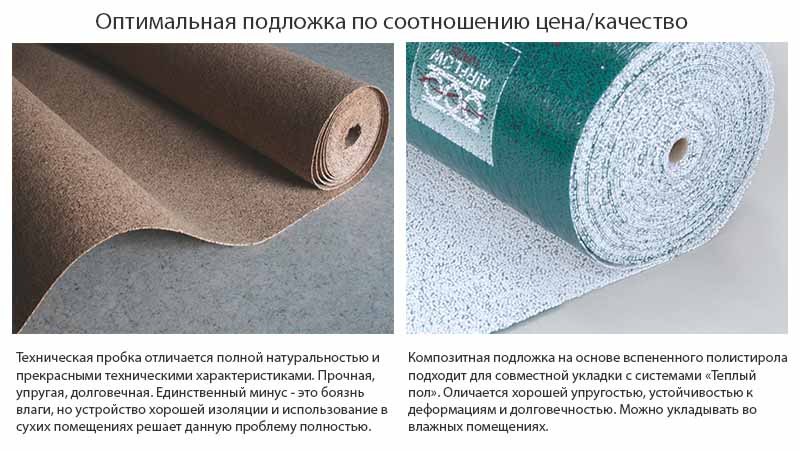
According to all characteristics, technical cork is the best lining material
The choice of laminate and substrate is best done in a complex manner. First, you need to decide on the budget that you have provided for the purchase of a substrate and laminate, and only after that choose a coating and related consumables.
Do not make mistakes - proceed from real needs and resources. It is more rational to purchase a high-quality 32-grade laminate and put it on a composite covering or cork than to buy a 33-grade laminate and lay it on polystyrene.
If you give an expert opinion, then a cork substrate for a laminate is the best choice, even in spite of low moisture resistance and high cost. The service life, sound and heat insulation qualities completely cover these shortcomings.
In one of the materials on the site, I have already told how I acted in my apartment. In short, I completely went through and insulated the floors. Then I leveled the floor and placed a 12 mm thick cement-bonded particleboard on top of the sub-floor. Then I laid the cork backing and the 33 grade laminate.
Yes, I had to spend a lot of money, but the result is worth it. In winter, there is enough central heating to keep the heaters off. The sound of footsteps or extraneous noises is inaudible at all. The service life of the coating is more than 5 years without a single problem.

2 mm for concrete and 3 mm for wood - optimal thickness of backing materials
If flooring is required together with a warm floor and you need to save money, then it is better to use a composite substrate. In third place in terms of price-to-quality ratio is expanded polystyrene coating.
The optimum thickness of the backing for the laminate should not be more than 3 mm. For a wooden base, a 2 mm thick coating is sufficient. In the case of MDVP, a slab thickness of 4 mm is permissible, if this does not contradict the laying technology prescribed by the manufacturer.
For example, if you read the instructions for the Tarkett laminate, then it directly says that the thickness of 3 mm is the maximum without taking into account the insulating film of 0.2 mm. Similar information goes to laminate from Quick Step, Pergo, etc.
Remember that the quality and durability of floating floors determines every element of the pie. It is better to level the subfloor better than to spend money on additional cushioning materials, which ultimately still will not save the laminate lamellae from fracture of the locking joints.
One of the main considerations when choosing and installing laminate flooring is the choice of substrate. The correct underlay will improve the performance of your laminate and extend its life.
1.
2.
3.
4.
What is a substrate for
A good underlay is needed to compensate for unevenness in the subfloor, making it easier to install and extending the life of the laminate.
Also, the substrate contributes to the sound insulation of the room and reduces heat loss, i.e. performs the function of thermal insulation.
The substrate is also able to absorb condensation and water microdroplets that appear on the screed.
Types of underlays for laminate
There are 3 main types of laminate underlays:
- Polyethylene foam
- Expanded polystyrene backing
Let's explore each of these options in more detail.
1. Polyethylene foam backing
Such a laminate underlay is made of isolone (foamed polyethylene) and is considered the most economical option.
Its advantages:
- not afraid of moisture;
- easy to fit;
- not afraid of the appearance of fungi and mold;
- does not allow the appearance of rodents and insects;
- fairly inexpensive material.
- when laying, the polyethylene foam backing can be easily damaged;
- the material is subject to the negative effects of ultraviolet radiation;
- it is pressed during long-term operation.
2. Polystyrene foam backing
It is a durable two-layer material, the layers of which are firmly connected with glue. The first layer of this substrate is polystyrene and the second is aluminum foil.
The floors on which the expanded polystyrene backing is laid are warmer, because reduced heat transfer between the subfloor and the laminate.
The substrate is laid with the foil facing up, and the process itself is somewhat more complicated than laying an isolon substrate. The substrate is attached using a special aluminum tape.
Material pluses:
- not afraid of the appearance of mold and mildew;
- not afraid of moisture;
- good thermal insulation of the floor.
- pressed under load;
- slightly more expensive than PE foam backing.

The underlayment is made from oak bark. Available in both sheets and rolls.
This is the optimal basis for installing a floating floor. Under pressure, the cork substrate is practically not pressed, and its service life is very long (a way to last longer than a laminate). Easy to fit.
The cork backing should not be used in high humidity areas such as kitchens or bathrooms. It is not possible to completely protect the material from moisture, and ingress of moisture leads to deterioration.
Material pluses:
- durable;
- not compressed under load;
- does not contain toxic substances;
- perfectly absorbs;
- has good noise and heat insulation properties.
- the material is vulnerable to bacteria and fungi;
- exposed to moisture;
- has a high cost compared to other options.
You can determine which substrate for the laminate is best for you based on the conditions of the room. In this case, be sure to keep in mind that the choice of substrate largely determines the duration of the laminate's life.
How to choose a laminate backing
- If the room has a normal humidity level and no temperature drops are expected, it is enough to choose a substrate 2-3 mm thick.
- If negative factors are present - a high level of noise, unevenness, etc., you need to choose a rigid substrate with a thickness of 4 mm or more. and more. In such cases, coniferous and cork materials are used.
- For joining the height of the laminate with a floor made of another covering, for example, carpet or tiles, the thickness of the substrate must be selected so that it, together with the laminate, is sufficient to reach a certain level.
- When choosing between roll and slab substrate options, remember that the advantage of slabs in leveling the substrate is just a myth. The shape of the same material does not affect its properties in any way.
- Substrate that is laid on a concrete floor should have properties such as vapor barrier, moisture barrier and softening. Therefore, it is better to use synthetic options.
- If you choose to install natural substrates, remember to protect them from moisture. An insulating layer, for example a polyethylene film, is first laid on the concrete floor, and then a cork backing is placed on it.
- Do not stick the cork backing to the base. Firstly, a special glue for a cork substrate is quite expensive, and secondly, due to the difference in the coefficients of thermal expansion of the glue and the substrate, the latter is deformed.
- Never lay multiple underlays to level the floor. Such actions are completely wrong.
- If the material has corrugations, then this side is laid down, thus there will be less irregularities.
- The foil material is laid with the reflective side up.
- The substrate is laid in a joint, without overlap of sheets on top of each other. In order not to displace the substrate during work, it is recommended to glue it with double-sided tape to the floor.
- Underfloor heating laminate must perform 2 functions - protect from moisture and retain heat. Foil-clad polyethylene will perfectly cope with this task. With his help flooring will be able to heat up well, and the impact of negative factors will be minimized.
Installation instructions for laminate flooring:
Laminate flooring is very popular. Almost every third renovation is not complete without installing laminate flooring.
Naturally, a reasonable question arises - what better backing under the laminate, because in building supermarkets there is a huge selection of this accompanying material for laminated coverings.
differ in density, composition and, of course, cost. In order for the coating to last as long as possible, it is necessary to choose the right material for the substrate.
In order to determine which substrate is better to use under the laminate, one must take into account on which surface the laminate is mounted.
For concrete and tiled floors, a waterproofing layer must be installed first. Usually as waterproofing material the installation instructions provide for laying a special film or applying a layer of specialized mastic.
Why do you need a laminate underlay? The underlayment for laminated floors is designed to perform shock-absorbing functions, as well as provide additional insulation of the room from heat loss and sound insulation.
Materials used in the production of laminate substrates

Various materials are used in the production of substrates for the installation of laminate floors:
- Polyethylene foam or isolone (foamed polyethylene) - the most common and inexpensive option for laminate substrates;
- Cork underlays for laminate - environmentally friendly and durable substrate option;
- Bituminous cork underlay - provides waterproofing of the floor covering;
- Composite materials;
- Extruded polystyrene foam - price for given view the substrate is low, and the technical characteristics correspond to construction and installation standards.
The thickness of the substrate under the laminate can vary from two to four millimeters. A thicker underlay is used for laminate flooring lamellas of class 32 and above.
A quality underlay of the correct thickness will significantly reduce walking noise. When choosing a base material, and deciding which substrate for the laminate is best, it can be assumed that the thicker the substrate, the better the sound insulation. But it is not so.
Attention. The thickness of the substrate should not exceed 4 mm. This requirement is explained by the fact that the substrate is compressed almost twice when walking. And with floor irregularities of two millimeters, the estimated vertical play increases to almost four millimeters. Naturally, under such loads, the quick step laminate joints can simply break at the joints, not withstanding the load. Therefore, it is strongly not recommended to increase the thickness of the substrate.
To know which laminate substrate is best to use, consider the advantages and disadvantages of each of these materials.
Isolone substrate

What is polyethylene foam (isolon)? It is an inexpensive material that is often used as a backing for laminate floors of low density and thickness.
This material is resistant to moisture, and it is easy to lay it with your own hands, without resorting to the services of specialists.
Izolon is light and inexpensive, but its density and resistance to mechanical damage leaves much to be desired.
When deciding which substrate is better for a laminate, it is advisable to use foamed polyethylene foam in cases where the load on the floor slabs should be insignificant.
Sheets of polyethylene foam are attached to each other using ordinary one-sided tape. Often this material recommended for installation on wooden floors.
The positive qualities of such a substrate include:
- Low cost;
- Resistant to moisture;
- Light weight of the material;
- Resistant to mold and mildew.
Cons of material:
- Tears very easily;
- Depreciation properties are practically not expressed;
- Material soundproofing is average;
- The material is easily pressed under mechanical stress and has a short service life.
Council. There are many photos and video materials on the Internet on installing a substrate for laminated floors, and before installing with your own hands, it is advisable to look at visual aids for laying laminate flooring, as well as to read the article.
Laminate backing made of technical cork

it best backing under the laminate for use in children's rooms and bedrooms. Cork is environmentally friendly, as it is made of environmentally friendly materials.
This substrate has a high density and is practically not compressed. It has excellent sound insulation (quiet floor) and thermal insulation characteristics.
The disadvantages of the material include only instability to moisture. Therefore, on the base of the floor, if it is concrete, it is worth laying a layer of waterproofing, and on top of the cork cover a layer of waterproofing "Aquastop".
Also manufacturers to improve technical characteristics material is often combined with cork with other materials:
- with the addition of rubber - the material significantly reduces vibration from the operation of household electrical appliances;
- Bituminous cork substrates can be laid even on an uneven concrete floor, with a height difference of no more than 3 millimeters, without installing an additional layer of insulation. Since they are made of kraft paper impregnated with bitumen and pressed with cork chips. Also, this material provides ventilation of the space under the substrate.
Important. When installing laminate floors, the difference in floor heights should not exceed 6 mm. Otherwise, the coating will quickly deteriorate.
Extruded polystyrene foam underlay
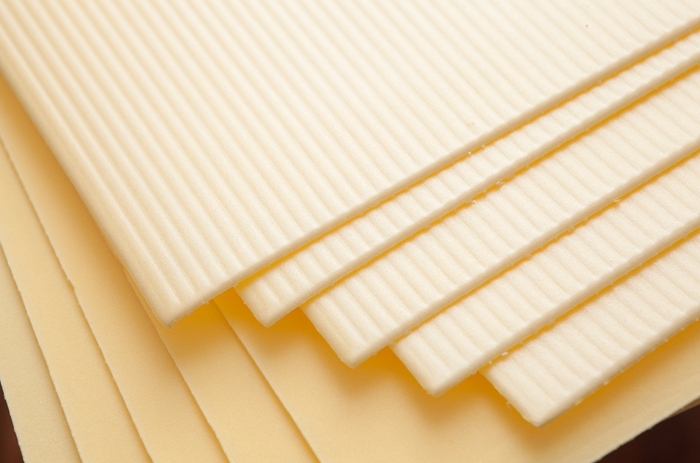
If you decide which substrate is better for the laminate, then expanded polystyrene answers many technical requirementsrequired for this building material... The foam polystyrene backing has good sound insulation properties, is resistant to moisture, does not require installation of a waterproofing layer, and is resistant to compression.
The guaranteed service life of the polystyrene foam backing is fifty years. The material is produced both in rolls and in sheets, two, three and five millimeters thick.
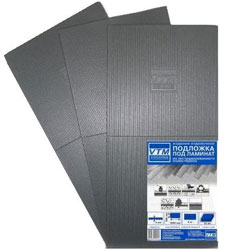
Vtm offers waterproof leveling substrates for rigid polystyrene foam laminates. The leveling, strong and compressive-resistant surface of the substrates from this manufacturer can significantly save money on preparing the concrete floor for the installation of the laminate.
Important. Vtm substrates can be laid on surfaces with a height difference of up to 3 millimeters.
Composite backing

The variety of options for such substrates is quite diverse, since each manufacturing company introduces know-how on its version of the substrate for the laminate. What is the best substrate for the laminate is problematic to decide.
Only arbiton, for example, offers more than forty types of laminate flooring underlays.
This type of substrate consists of two layers of polyethylene film, between which a layer of granular polystyrene foam is located.
Such materials provide increased sound insulation of the "quiet running" coating, and also have excellent vapor and moisture protection characteristics. For example, a 6 mm underlay is recommended for laminates with a minimum thickness of 12 millimeters.
Important. During installation, pay attention to the fact that the manufacturer's logo is applied to the vapor-permeable side of the backing material.
In conclusion of the article
When starting the installation of laminate floors, do not even think about whether a substrate is needed. It is a necessary component for the installation of laminate floors. And which of the materials will be chosen depends on the individual technical characteristics of each individual room.



